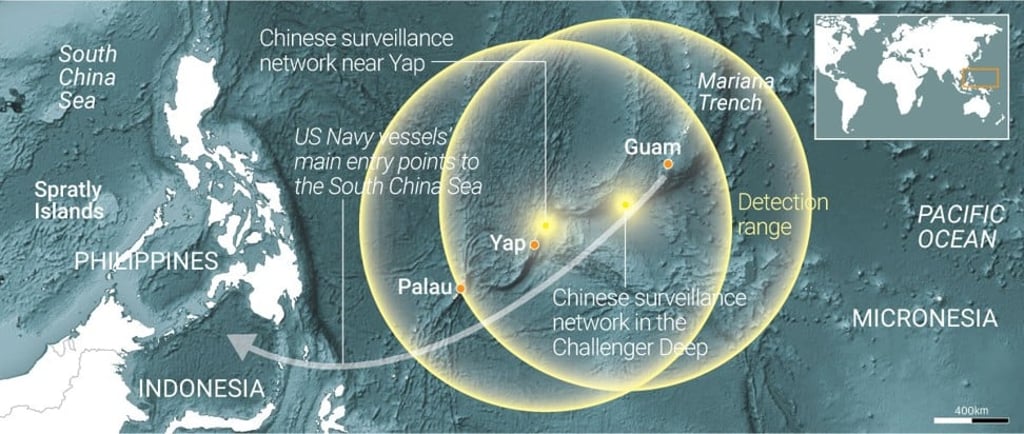Surveillance under the sea: how China is listening in near Guam
Acoustic sensors in waters near US military base in Western Pacific are ‘standard practice’ for monitoring submarine traffic, US analyst says

China has planted powerful listening devices in two strategic seabeds deep in the waters near Guam, America’s biggest military base in the Western Pacific.
The cutting-edge acoustic sensors – some of which have a listening range of more than 1,000km – are being used for scientific research such as studying earthquakes, typhoons and whales, according to the Chinese government.
But security experts say the sensors can also track the movement of submarines in the South China Sea and intercept underwater signals between the submarines and their command base.
The high-end surveillance devices have been in operation since 2016, though the information was released by the Chinese Academy of Sciences only this month.
One of the acoustic sensors is located in the Challenger Deep of the Mariana Trench – the deepest place on Earth at 10,916 metres beneath sea level – and another is near Yap, an island in the Federated States of Micronesia, the information revealed.
The Challenger Deep and Yap are respectively about 300km and 500km southwest of Guam, between Guam and Palau.
